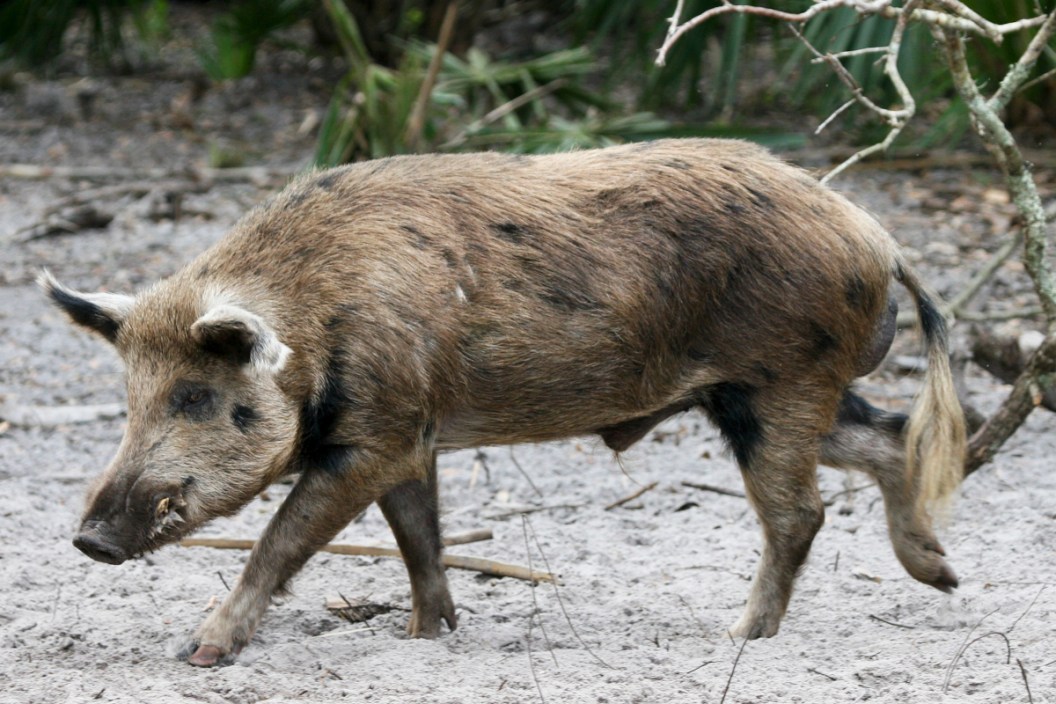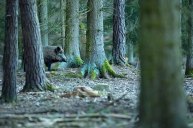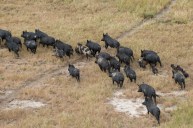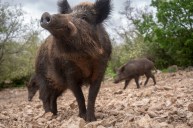Feral hogs are a huge problem for Florida too.
Everyone knows about the problems that wild hogs cause Texas. The Lone Star state is usually considered ground zero because it loses millions of dollars a year due to the massive amounts of destruction to property and agriculture caused by this invasive species. And hog hunters can only do so much to curb the spread because of how fast these animals produce new litters of piglets.
However, not as many people know that the original state for feral hogs is Florida. It was in the Sunshine State that the hog problem really originated here in the United States. Since they were first introduced, the hog population has now spread to all 67 counties putting delicate ecosystems and the native species that inhabit them in danger.
Just like Texas, the state of Florida has extremely open regulations designed to help combat the feral swine problem. This is everything you need to know about Florida's wild pigs and how you can start hunting them.
A brief history of feral pigs in Florida.
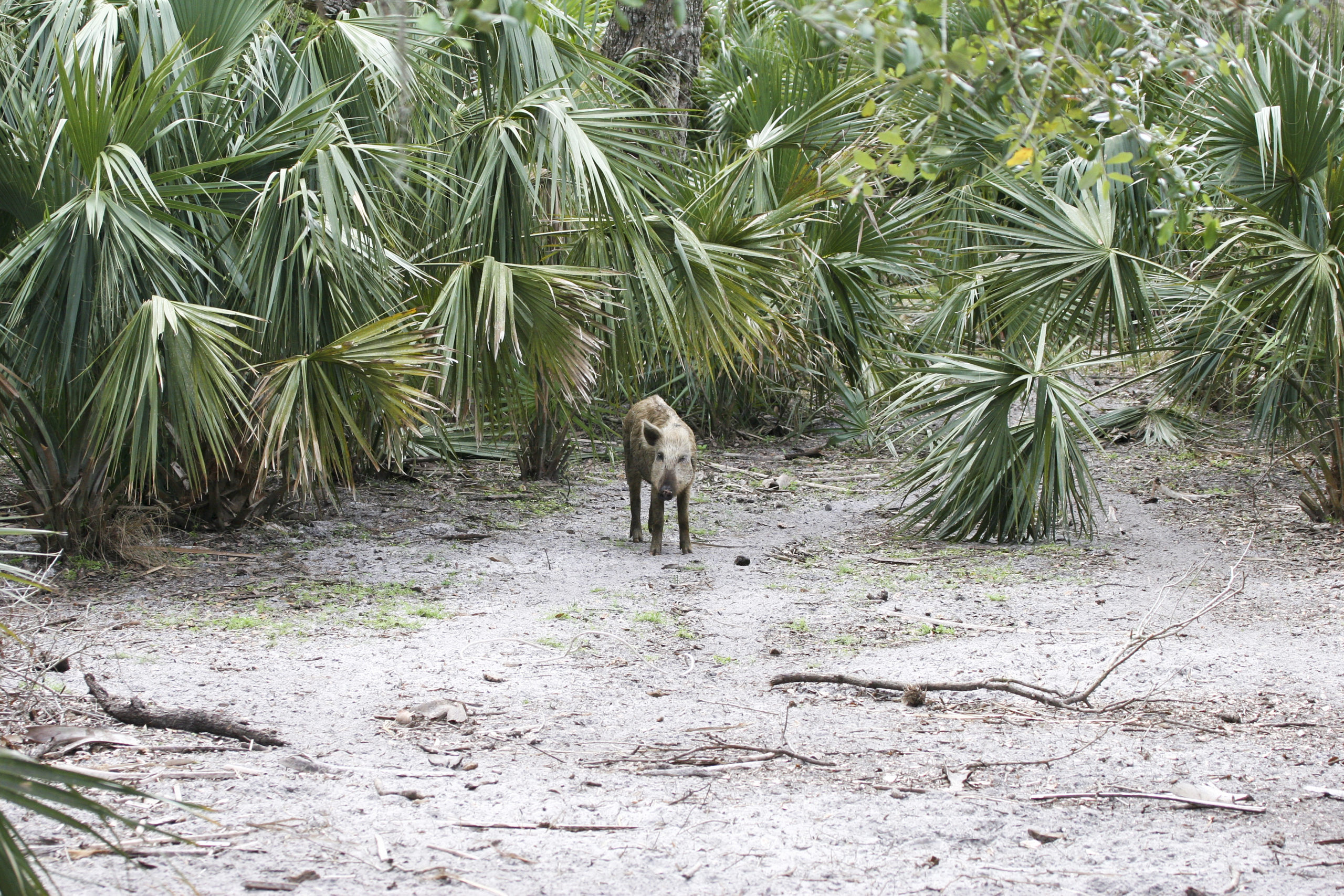
Getty Images: sstaton
Most historians believe Christopher Columbus as the one responsible for first introducing pigs to North America hen he introduced them to Cuba, Jamaica, and other islands of the Caribbean in the 1490s. He never landed in what is now the United States though, which is why most experts suspect someone else was responsible for the ones here. Conquistador Juan Ponce de Leon may have released pigs in Florida in 1521, although this is not confirmed.
Florida Fish and Wildlife and most historians believe Spanish explorer Hernando de Soto probably released domestic swine to Florida in 1539. Those first pigs adapted quickly to the warm habitat and quickly spread. As a result, pigs have been a part of Florida's wild habitats for literally hundreds of years now.
However, just because they have been here longer than anyone can remember does not mean they are welcome. Hogs often use their snouts and tusks to root up yards and farmer's fields just like they do in Texas. One sounder can destroy an entire crop in a single evening. If that wasn't bad enough, they also destroy yards and landscaping in their endless quest for food. Another big concern is hogs spreading diseases to humans. Feral swine are known to spread pseudorabies and sine brucellosis among other contagious diseases.
In Florida's wilder areas, hogs can devastate native plants and uproot vital ground vegetation that provides cover for dozens of other species. They also kill fawns and will routinely chow down on the eggs of native species like alligators, turkeys, and other native bird species. And while these wild animals can do untold damage to Florida's environment, they have almost no natural natural predators in the state. Sometimes a bear or alligator may catch them, but it's not enough for nature to keep the population in check itself. Which is where human hunters come into play.
Can you hunt feral hogs in Florida?
Absolutely, although Florida's regulations are not quite as open as Texas'. One thing the to states have in common is that hogs can be hunted or trapped 365 days a year and 24 hours a day, so long as you have landowner permission. Florida does not require a license or permit to pursue feral hogs on private land. However, if you are planning to hunt one of the state's wildlife management areas (WMAs), you may need a management area permit and possibly a daily quota permit or quota permit. Speaking of WMAs, hunting for hogs is not unlimited on public land. There are established hog hunting seasons in late spring and summer and these seasons may differ from WMA to WMA.
There are a couple of places where hogs can be hunted year-round on public land. Those are the Kissimmee Chain of Lakes Area and the Rolling Meadows Unit of the same area. The FWC notes that some WMAs may also allow the taking of hogs during small game season. Make sure to check the area-specific regulations for the WMA you plan on hunting ahead of time.
One thing we appreciate about Florida is how they allow any legal rifle, shotgun, pistol, bow or crossbow. The state also allows the use of high-powered air guns and airbows. So, if you were looking for a good reason to purchase one, feral hogs are as good a reason as any.
Other regulations.
Florida also allows hog trapping using either box traps, cages, or corrals. Bear in mind traps need to checked at least once every 24 hours to be legal. Trappers are not allowed to transport live hogs unless you get the proper permits first though. When it comes to bag limits, on private land there are none, nor are their minimum size requirements.
However, if you are planning to hunt in WMAs, make sure to check their regulations ahead of time because there are size requirements, and bag limits in some of these areas.
We should also note that Florida does allow the use of dogs for hunting hogs. However, you must have written landowner permission. You also need to carry a copy with you while hunting. Florida also requires the collars of all dogs have the owner's name and address on them.
Where to hunt hogs in Florida.
While hogs are found throughout Florida from Jacksonville to Orlando, Miami to Tampa, the FWC has identified some key WMAs as being better than the others when it comes to the best place to bag big boars and sows. The central and northern parts of the state tend to have more hogs than others.
The FWC specifically recommends Big Bend Tide Swamp Unit, Mallory Swamp, Steinhatchee Springs, Devil's Hammock, Aucilla, Apalachocla Bradwell Unit, Choctawhatchee River, and Toschatchee.
Florida may not get as much attention as other parts of the country for wild hogs, but they are well established in the Sunshine State and offer up some extra hunting opportunities in the offseason when you are missing hunting season. Give hunting them a try this year, the feral hog problem needs as many people as possible helping to keep these invasive animals in check.
Products featured on Wide Open Spaces are independently selected by our editors. However, when you buy something through our links, we may earn a commission.
For more outdoor content from Travis Smola, be sure to follow him on Twitter and check out his Geocaching and Outdoors with Travis YouTube channels.
NEXT: WHERE DID FERAL HOGS COME FROM ANYWAY? A HISTORY OF FERAL SWINE IN NORTH AMERICA
WATCH
